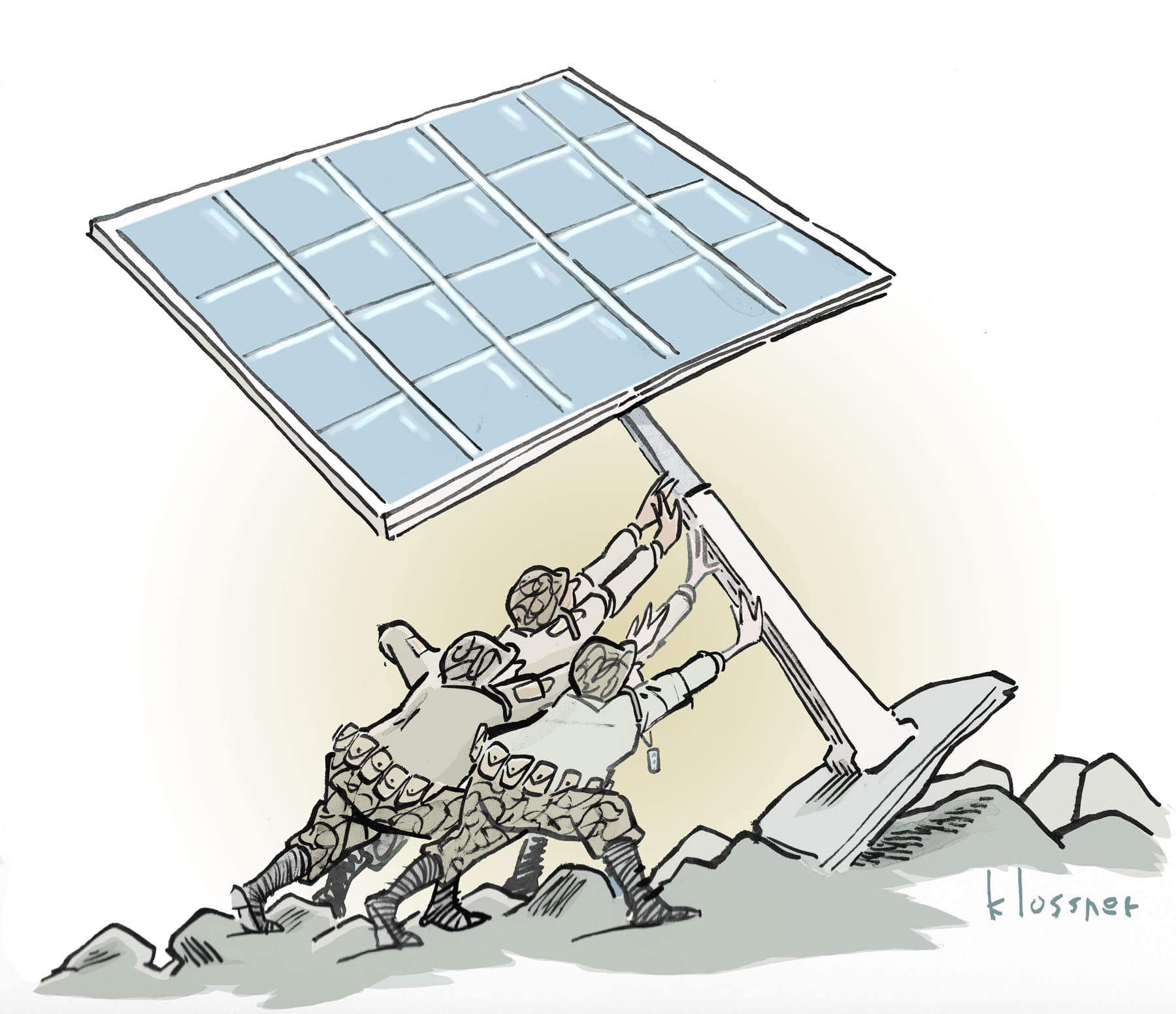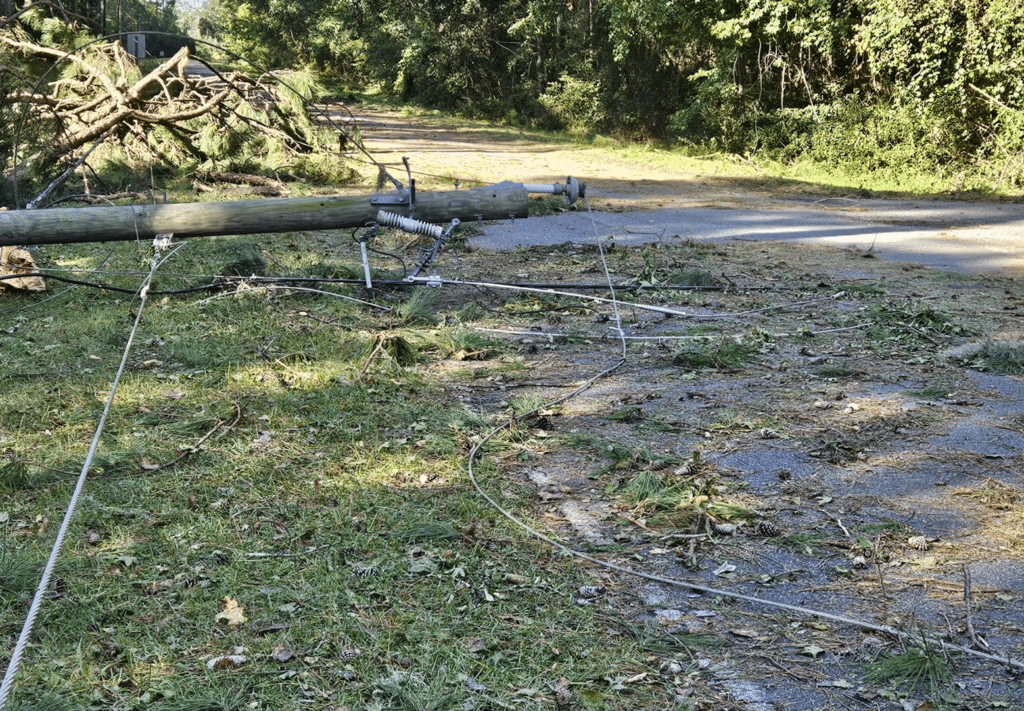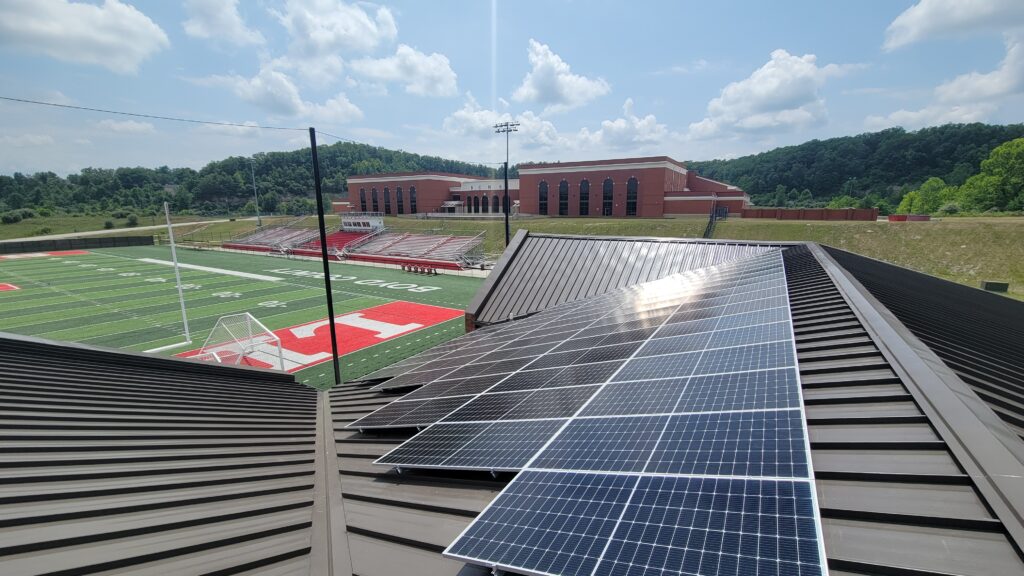Thinking about going electric on your next vehicle purchase? So is the American military. Recently, the Army kicked the tires on an all-electric version of its Infantry Squad Vehicle, and it’s investing $50 million over the next year on ways to get around without fossil fuel.
Beyond electric vehicles, a move to clean energy is underway across the U.S. Armed Forces, including solar installations, microgrids, and alternative fuels. Military leaders have long recognized that dependence on fossil fuels is a security risk at home and a deadly liability on the battlefield. Thousands of casualties, for example, have been attributed to attacks on fuel convoys in Iraq and Afghanistan.
We also happen to have an administration that recognizes the climate crisis as a national security risk. As he took office in January, President Biden signed an executive order declaring that “climate considerations shall be an essential element of United States foreign policy and national security.”
But even back when the election of Donald Trump sent a dark cloud over the world of clean energy, the military was soldiering on with projects such as solar arrays on U.S. bases and an all-electric warship, the USS Zumwalt. After all, the Department of Defense (DoD) accounts for more than three-quarters of the entire federal government’s energy consumption, and it has a goal to reach 25% renewable energy by 2025. Judging from its most recent report on energy, the agency is a little more than halfway there.
-
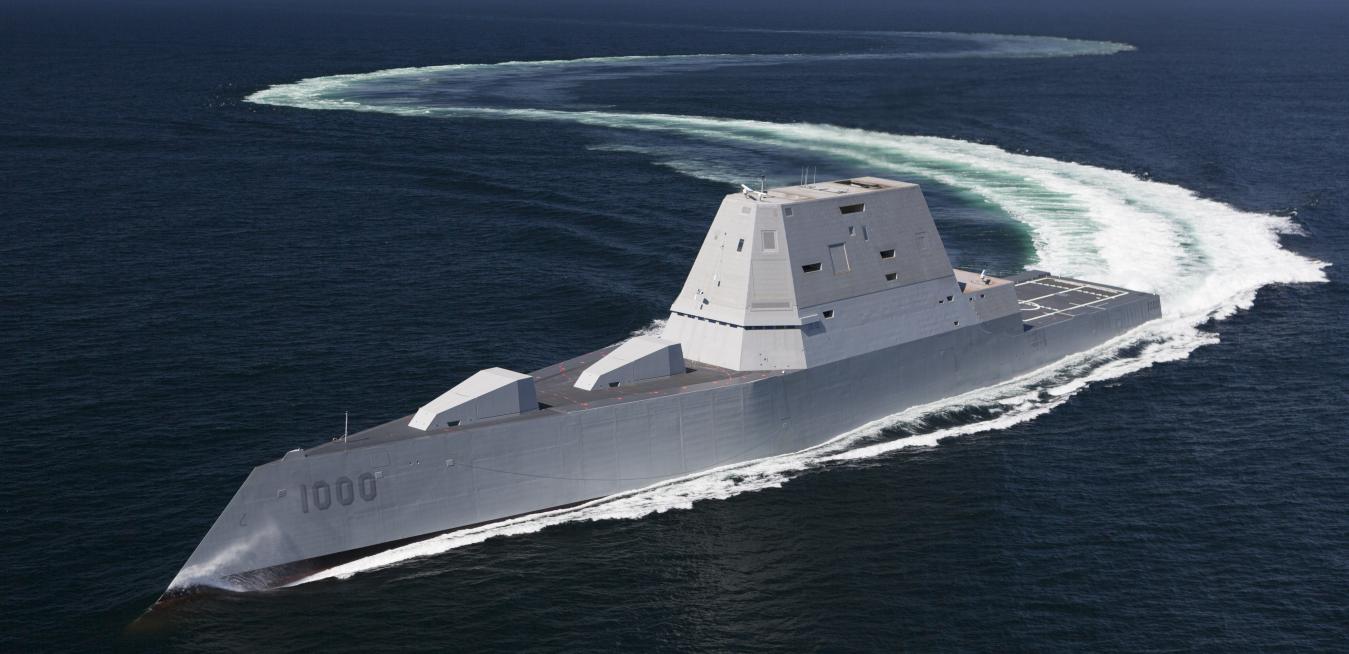
The USS Zumwalt, the U.S. Navy’s largest and most advanced stealth destroyer.
And like the rest of us, the DoD is looking for ways to save on energy—its annual energy budget exceeds $3 billion—and be more resilient in the face of power disruptions. The department saw more utility outages lasting longer than eight hours in fiscal year 2019 compared to the year before, according to its energy management report, and outages of all lengths cost the agency more than $4 million .
Given these large bills, installing renewable energy makes both strategic and financial sense. At Fort Hood in Texas, switching to solar and wind power—which now supply about 45% of the site’s energy—saved $2.5 million in the first year alone. And DoD is testing microgrids backed up by robust batteries on a replica base at the National Renewable Energy Laboratory dubbed Fort Renewable.
Switching to solar and wind power saved Fort Hood $2.5 million in the first year alone.
So, when it comes to remaking its energy supply, DoD is working on it… but more needs to be done.
“Let’s be clear. We’re behind,” Army Lt. Gen. Eric Wesley told DefenseNews last year, referring specifically to the electric vehicle transition. “All of the various nations that we work with, they’re all going to electric power with their automotive fleet, and right now, although we do [science and technology] and we’ve got some research and development going on and we can build prototypes, in terms of a transition plan, we are not there.”
-
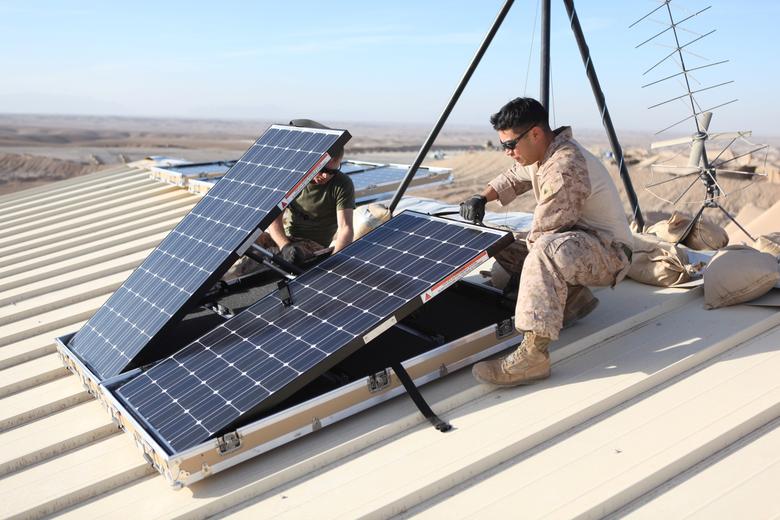
U.S. Marine Corps Corporal Robert G. Sutton (L) and Corporal Moses E. Perez, field wireman with Combat Logistics Regiment 15 install new solar panels on Combat Outpost Shukvani, Helmand province, Afghanistan, November 19, 2012. U.S. Marine Corps/Lance Cpl. Alexander Quiles/Handout/File Photo via REUTERS
With hundreds of bases operating worldwide and many tactical and security considerations, it’s not surprising that the DoD isn’t converting to clean energy at warp speed. But with an annual budget exceeding $705 billion and more than a million troops, few organizations are better positioned to push the envelope on energy. Former military energy advisers Michael Wu and Jon Powers argue the agency should, among other things, establish an Office of Energy Innovation that would focus on “electrifying the tactical edge,” which could include ships and aircraft.
This last bit—the tough-to-electrify sectors like flight and marine transport—is where the military could really help move the world away from dirty fuels. Military innovation tends to make its way into the civilian realm. (Duct tape? Who knew!) Yes, that includes the Humvee, which begat the gas-guzzling Hummer.
But in the future, our armed forces could be a seedbed for cleaner travel and more resilient electricity strategies that benefit all of us.












